
woodï.concept ─ circular reforestation concept
Sustainability that takes root: productronica plants trees for the future.
In celebration of its 50th anniversary, productronica has partnered with woodï to launch a special project that combines technological history with a commitment to the future.
We invite you, as an exhibitor or partner, to become part of the woodï.wald and sponsor one or more seedlings as a symbol of innovation, consistency, and shared growth. Every tree has a story to tell: of roots, change, and the desire to make a difference together.
Thanks to your support, a new forest is growing—alive, diverse, and full of hope. You are helping to restore destroyed natural habitats and preserve biodiversity.
🌳 Grow with us for tomorrow.
The most important questions about the
circular reforestation concept
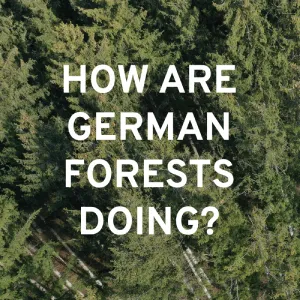
German forests are in a state of flux – characterized by enormous challenges, but also by new opportunities. Climate change is leaving its mark: persistent drought, extreme heat waves and pest infestations are having a massive impact on our forests.
Monocultures such as pure spruce stands are particularly affected. Due to their susceptibility to drought and bark beetles, they have already died in many places. According to the 2023 Forest Condition Report, only around 20% of trees in Germany are still considered healthy. The crowns of many trees have thinned out considerably – a sign of long-term stress.
But the good news is that things are moving. Forest conversion to climate-resilient, near-natural mixed forests is already in full swing. Native, site-appropriate tree species such as maple, lime and larch are increasingly being planted to promote biodiversity and make the forest more resilient to future challenges.
More and more initiatives are also focusing on sustainable and long-term concepts in the area of reforestation. Because one thing is clear: our forests are more than just suppliers of wood. They are CO₂ reservoirs, habitats, climate protectors – and indispensable for biodiversity.
With targeted reforestation campaigns, near-natural forestry and close cooperation between business, science and society, we have the opportunity to actively help shape the forests of tomorrow – more diverse, healthier and sustainable.
Our forests are under stress – and not just since yesterday. Climate change is the main driver of forest dieback in Germany. In recent years, extreme weather events such as long periods of drought, high temperatures and strong storms have increased massively. These conditions weaken the trees and make them more susceptible to pests such as the bark beetle, which is multiplying rapidly under the changed climate conditions. Particularly affected: Spruce monocultures. For decades, fast-growing, economically profitable tree species such as spruce have been planted across the board – often in locations where they do not occur naturally. These stands are particularly susceptible to heat, drought and pests – and die off over large areas.
Other reasons:
Non-natural forestry:
for decades, the focus was on fast timber production instead of healthy, species-rich mixed forests.
Lack of water:
The lack of rain causes the groundwater level to drop and the trees literally die of thirst.
Lack of nutrients:
depleted soils offer little basis for young plants.
Air pollution & nitrogen input:
Pollutants from traffic and agriculture pollute the soil and change the forest ecosystem.
The woodï reforestation project literally tackles the problem of forest dieback at its roots and is not a classic CO₂ compensation project, but a long-term reconstruction measure for the fragile forest system and its microcosm,” says Bekra forest expert Erika Gronert, who is also involved in the project. “We have 3,000 seedlings, which are representatives of the forest of the future. A mixed forest made up of a wide variety of different plants.”
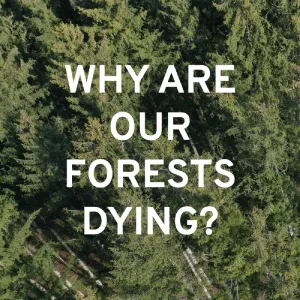
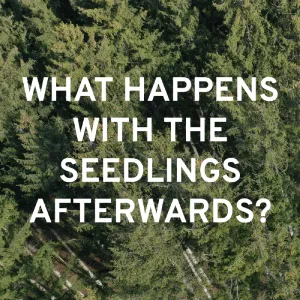
The different tree species can be admired by visitors at the circular hall concepts as they were realized at f.re.e, Laser, BAU, iba, WOQ. They all have the same goal: they will be part of a large-scale reforestation campaign. These seedlings have been grown in a local tree nursery (woodï.versum partner Bekra), carefully transported by experts and planted at the trade fair. After the fair, the seedlings will be taken to an acclimatization hall to ensure that the majority of the trees survive the process.
The remaining seedlings are then transported to three selected damaged forest areas in Bavaria, where they are planted and cared for in cooperation with local farmers and foresters. A special feature: employees of Messe München and meplan are actively involved in replanting the seedlings on site. This creates a fully circular cycle.
The woodï.wald is our active contribution to climate and environmental protection. Together with partners, customers and our team, we plant new trees on damaged forest areas. Why is this so important?
Because forests play a key role in the ecological balance – and are currently under severe pressure.
Binding CO₂ – protecting the Climate
Trees remove CO₂ from the atmosphere and store it in the long term – a natural and effective climate protection measure. With woodï.wald, we not only offset emissions mathematically, but also create real CO₂ reservoirs that remain effective for years to come.
More biodiversity instead of monoculture
We deliberately plant diverse, site-appropriate tree species such as pine, maple, lime and larch. In this way, we promote a healthy mixed forest that is more resistant to climate stress, pests and extreme weather – and at the same time provides a new habitat for many animal and plant species.
Out of responsibility: from seedling to future
What begins at the trade fair with a small seedling as a design element becomes a living contribution to nature in the woodï.wald. Each tree is part of a story – made visible through hangtags and our microsite, where the development can be followed transparently.
Join in instead of looking away
The woodï.wald is not just reforestation – it is an experience. Our partners and customers are invited to take part in the planting and set an example themselves. Because real sustainability is the result of joint action – not just good intentions.
With woodï.wald, we are taking responsibility – ecologically, socially and transparently. Every tree planted is a statement for a more sustainable future. And because we know that change only comes about through action, our approach is: change-by-design – from the trade fair appearance to the forest.
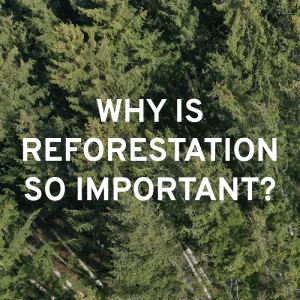
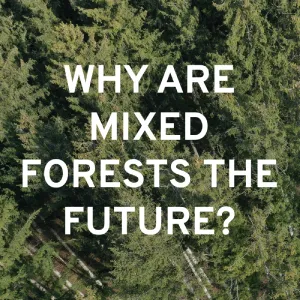
The instability of our forests is due in particular to the cultivation of monocultures. A single tree variety is not able to withstand various dangers and survive in the long term. Be it the wind, which always finds enough surface to attack in conifers, or the bark beetle, which particularly prefers certain tree varieties. A healthy and strong forest thrives on its biodiversity and can only be resilient and provide sufficient nutrients in this way. For this reason, it is essential to transform our forests from monocultures to mixed forests.
The change to a mixed forest offers various advantages: Deciduous trees, for example, can provide additional shade in summer, which benefits both other trees and drying soils. In colder seasons, deciduous trees are better protected from storms, as they offer less surface area to attack when bare. A mixed forest can therefore significantly reduce the spread of causes of damage.
At the fairs, a balanced mixture of tree species is placed on the woodï decorative shelves, which are then used for reforestation. On average, these are 40-60 cm tall and 2-4 years old. The maximum planting depth is 16 cm for the reforestation campaigns and planting on the damaged areas. The tree species include the European larch, a rather cold- and drought-resistant tree species, as well as the lime tree, which is widespread in Europe and can live up to 1000 years due to its robustness. The Douglas fir, also known as Douglas fir, Douglas spruce and Douglas pine, can grow up to 60 meters high and 12 meters wide and has a high-quality root system that can also draw water and nutrients from deeper layers. The balanced mixture of tree species is intended to make the forest more resilient and better able to withstand climatic changes. It has been proven that soils with mixed cultures are richer in nutrients and therefore an important source of food for wildlife.
The tree seedlings used combine several aspects of sustainability. The focus is on the circular economy, which plays a central role in the hall concept. If you want to act in a circular way, you have to set the course for this in the first step. For the woodï.concept reforestation, this means rethinking the life cycle of plant decoration. The aim is not only to be able to replant the plants, but also to create added value for nature and people. The result: with the seedlings, we make a significant contribution to the reforestation of Bavarian forests. This holistic, circular concept, which is both innovative and sustainable, can be a step towards the future of green trade fairs.
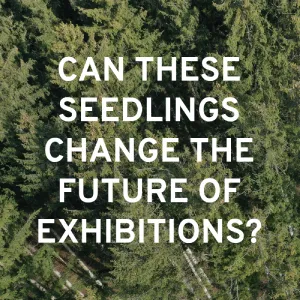
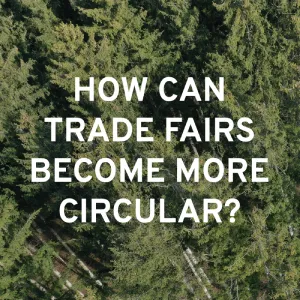
Making trade fairs more sustainable is a major challenge. There are many factors to consider – from transportation and materials to waste production. We are already managing to act sustainably in many areas – the concept areas at f.re.e, Laser, BAU, iba and WOQ are perfect examples of this. With the circular exhibition stand construction system woodï ─ a proprietary product from meplan ─ large areas are built using reusable and sustainable materials.
This modular exhibition stand construction system, which primarily uses wood and steel as materials, offers a high degree of customization and is perfect for hall concepts. As this system can be assembled and dismantled again and again, it is used over several trade fairs. If there is too much wear and tear, new elements can be produced from the material. All woodï components are stored locally on the Messe München site, which drastically reduces transportation routes and thus produces less CO₂.
In combination with the innovative concept of plant decoration, a process is created that can be used as a template for future trade fairs in the spirit of the circular economy.
Artikel teilen

